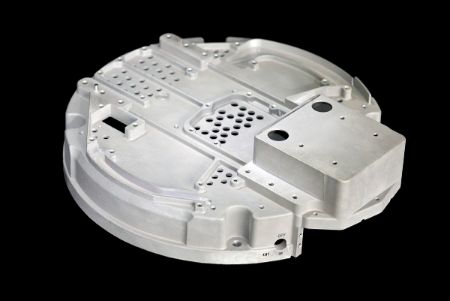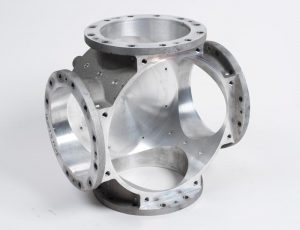Aluminum Casting Explained: Trick Facts and Insights for Market Professionals
Aluminum casting acts as an essential procedure in modern production, shaping parts across numerous markets. Its diverse techniques, such as sand and die casting, deal with different manufacturing demands. The distinct residential properties of aluminum alloys improve their applicability, yet challenges stay in keeping quality and effectiveness. Recognizing these aspects is vital for sector specialists. What are the most recent improvements and ideal practices that can even more enhance this procedure?
Overview of Aluminum Casting Processes

Key components of aluminum casting processes include the prep work of molds, which might be made from sand, metal, or ceramic materials, depending on the planned usage. Additionally, temperature control is vital to ensure proper melting and solidification of aluminum.
The casting procedure permits detailed layouts and can accomplish high levels of dimensional accuracy. Once cooled down, the spreadings may undertake completing operations such as machining or surface area treatment to fulfill specific performance criteria. Generally, aluminum casting functions as a functional manufacturing technique, efficiently fulfilling the varied demands of different industries.
Sorts Of Aluminum Casting Approaches
In the domain name of aluminum casting, various methods are used to accomplish different outcomes. Sand casting techniques supply flexibility and cost-effectiveness for intricate shapes, while die casting procedures offer high accuracy and efficiency for mass production. Recognizing these techniques is essential for picking the suitable strategy based on job needs.
Sand Casting Techniques
Sand casting methods stand for an essential technique in aluminum casting, where sand is made use of as a mold and mildew product to form molten metal. This procedure entails developing a pattern from the preferred component, which is after that positioned in a sand blend to form a mold and mildew. The sand is compressed around the pattern, and after removal, it develops a tooth cavity in the form of the component. Molten aluminum is put into this dental caries, allowing it to strengthen and cool. One substantial benefit of sand casting is its flexibility; it can fit intricate shapes and big elements. Furthermore, the products made use of are relatively economical, making it an accessible choice for numerous production applications in the aluminum industry.
Die Casting Processes
Die casting processes are a prominent method for shaping aluminum elements, making use of high-pressure strategies to require liquified metal into precisely engineered molds. This process is especially preferred for its capability to generate intricate shapes with limited resistances and a smooth surface. There are 2 main sorts of die casting: warm chamber and chilly chamber. Warm chamber die casting is suitable for metals with low melting points, allowing for faster production rates. On the other hand, chilly chamber die casting is ideal for greater melting point metals, requiring a different melting heater. Both techniques improve efficiency and reduce product waste, making them crucial in auto, aerospace, and durable goods markets. Understanding these procedures aids experts select one of the most proper method for their particular applications.
Product Feature of Aluminum Alloys

Stamina and Longevity
Strength and sturdiness are crucial qualities of aluminum alloys that make them ideal for different casting applications. These products show a beneficial strength-to-weight proportion, permitting the production of lightweight yet robust components. When it come to tensile toughness, certain aluminum alloys can be crafted to withstand considerable tons without warping. This residential or commercial property is specifically important in markets such as aerospace and automobile, where efficiency and security are extremely important. In addition, aluminum alloys often keep their mechanical residential or commercial properties under varied temperature level problems, making certain regular efficiency. The inherent ductility of these alloys additionally permits reliable shaping throughout the casting procedure, making it much easier to generate complicated geometries. In general, the strength and durability of aluminum alloys contribute significantly to their widespread usage in innovative applications.
Deterioration Resistance Characteristics
While aluminum alloys are valued for their stamina and lightweight homes, their corrosion resistance is another essential feature that improves their suitability for various applications. Aluminum normally develops a protective oxide layer when revealed to wetness, which aids to protect against more oxidation. This intrinsic property makes aluminum alloys specifically useful in atmospheres prone to deterioration, such as aquatic and industrial settings. Furthermore, different alloy make-ups can affect resistance degrees, with specific alloys especially crafted to improve this characteristic. Therapies like anodizing can better enhance rust resistance by thickening the oxide layer. Recognizing the deterioration resistance of aluminum alloys is vital for market specialists when selecting materials for jobs needing resilience and long life in challenging atmospheres.
Benefits of Aluminum Casting in Manufacturing
Aluminum casting deals numerous advantages in production, making it a preferred option for numerous industries. One considerable advantage is its lightweight nature, which adds to reduced transportation prices and improved energy performance in end products. Aluminum's excellent thermal and electrical conductivity improves performance in applications needing warmth dissipation or electrical conduction.
The material's capability to be cast right into complex forms permits for style adaptability, reducing the need for extra machining procedures. Furthermore, aluminum casting shows premium deterioration resistance, resulting in longer product lifespans and lower upkeep costs.

Common Applications of Aluminum Castings
The versatility of aluminum casting enables its widespread usage across various industries. Common applications consist of automobile parts, where light-weight and corrosion-resistant components, such as engine blocks and transmission housings, enhance automobile efficiency. In the aerospace industry, aluminum spreadings are used for architectural elements, supplying stamina without including Check This Out substantial weight.
Furthermore, the electrical market take advantage of aluminum spreadings in manufacturing rooms and warm sinks, where thermal conductivity is necessary. The durable goods industry likewise includes aluminum castings in items like pots and pans, furnishings, and ornamental things, integrating looks with capability.
In addition, the building industry employs aluminum spreadings for architectural components, window frameworks, and fixtures, which supply resilience and design adaptability. In general, the diverse applications of aluminum spreadings underscore their relevance in modern-day manufacturing, adding to developments in performance and item design throughout multiple fields.
Technologies and Technical Innovations
As sectors continue to progress, advancements in aluminum casting technology are changing production processes and product capabilities. Improvements in 3D printing and additive production have actually made it possible for the creation of complex geometries that were formerly impossible to achieve with typical methods. These technologies enable rapid prototyping, reducing preparations and expenses.
In addition, renovations in mold layout and products have actually enhanced the casting process by boosting efficiency and minimizing waste. The integration of wise production techniques, such as IoT gadgets and real-time information analytics, enables far better monitoring and optimization of manufacturing parameters, resulting in higher high quality outcomes.
Furthermore, developments in aluminum alloys give boosted stamina, deterioration resistance, and light-weight residential properties, dealing with the growing demands in vehicle and aerospace sectors. Collectively, these innovations are not only improving efficiency yet also fulfilling the strenuous standards of modern engineering applications.
Best Practices for Top Quality Control in Aluminum Casting
Guaranteeing top quality outputs in aluminum casting calls for adherence to best practices that incorporate numerous phases of the manufacturing procedure. First, detailed material inspection is vital to validate the quality of aluminum alloys made use of, as contaminations can significantly influence the final product. Applying specific melting and pouring strategies lessens problems; preserving perfect temperature levels protects against oxidation and advertises harmony.
Mold and mildew layout plays a crucial role; utilizing computer-aided layout (CAD) can enhance accuracy and reduce human error. Normal monitoring of the cooling procedure is critical to avoid bending and shrinkage. Furthermore, utilizing non-destructive screening methods, such as ultrasonic or X-ray inspections, helps determine interior defects without harming the components.
Ultimately, establishing a comments loophole with operators and designers fosters continual enhancement, ensuring that quality assurance measures develop together with technical innovations. By complying with these best practices, makers can boost the integrity and performance of aluminum spreadings.
Frequently Asked Inquiries
What Are the Ecological Influences of Aluminum Casting?
The environmental effects of aluminum casting include considerable energy consumption, greenhouse gas emissions, and potential water contamination from foundry operations. In addition, bauxite mining for aluminum ore can result in habitat devastation and soil degradation.
Exactly How Does Aluminum Casting Contrast to Various Other Metal Casting Procedures?
Aluminum casting typically offers advantages in lightweight parts and rust resistance compared to various other processes, such as iron or steel casting, which might provide better toughness yet cause heavier and much less corrosion-resistant products. - Aluminum Casting Company
What Are Common Defects in Aluminum Castings and Their Reasons?
Typical problems in aluminum castings consist of porosity, shrinkage, and inclusions. Causes usually stem from improper pouring methods, inadequate mold layout, or contamination of the liquified metal, impacting the end product's honesty and performance.
What Safety Precautions Should Be Taken Throughout Aluminum Casting?
During aluminum casting, essential security precautions consist of putting on protective equipment, ensuring correct air flow, keeping a tidy workspace, taking care of molten metal with treatment, and adhering to well established protocols this website to lessen dangers of burns, breathing threats, and crashes.
How Can I Enhance the Performance of My Aluminum Casting Operations?
To boost performance in aluminum casting operations, one ought to enhance mold style, improve product handling, use automated procedures, conduct regular maintenance on devices, and spend in worker training to improve abilities and productivity.
Various techniques exist, aluminum casting incorporates numerous key procedures that cater to different applications and needs. Secret elements of aluminum casting procedures consist of the prep work of mold and mildews, which might be made from sand, steel, or ceramic products, depending on the planned use. Sand casting methods stand for a basic approach in aluminum casting, where sand is used as a mold product to form molten steel. As industries proceed to evolve, innovations in aluminum casting innovation see are transforming manufacturing procedures and item capacities. Making sure high-grade results in aluminum casting requires adherence to finest methods that encompass different stages of the manufacturing procedure.